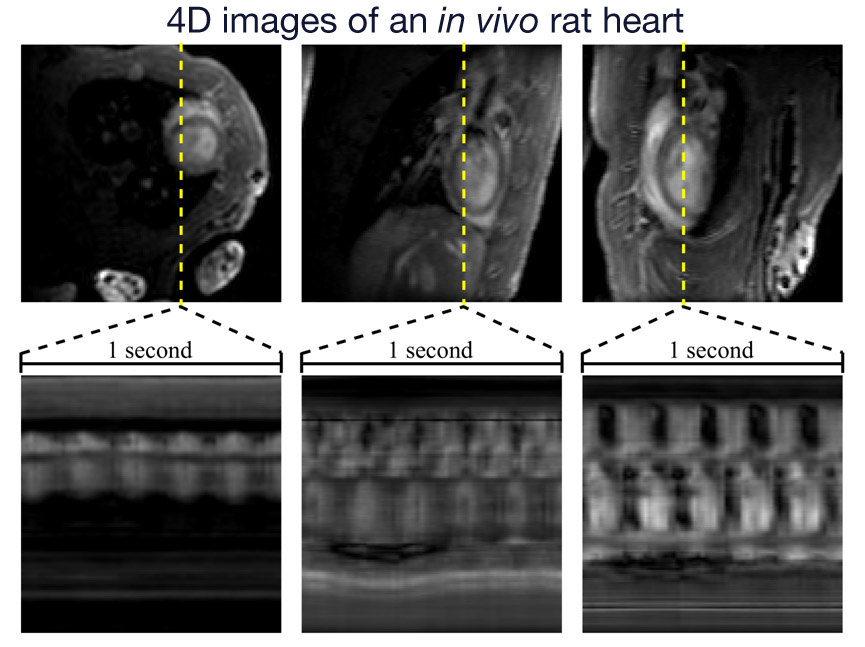The Beckman Institute Graduate Student Seminar Series presents the work of outstanding graduate students working in Beckman research groups. The seminars begin at Noon in Beckman Institute Room 1005 and are open to the public. Lunch will be served.
Segmentation-based Statistics of Natural Images
Emre Akbas
A natural image is far from being a random configuration of pixels. Rather, it exhibits a high degree of organization in its spectral and photometric properties, geometry, and layout. Image segmentation captures the geometric and topological properties of images which are not possible to obtain using pixel, patch, or subband-based methods. We compile and use segmentation statistics from a large number of images, and propose a Markov random field based model for estimating them. Our estimates confirm some of the previous statistical properties of natural images as well as yield new ones. To demonstrate the value of the statistics, we successfully use them as priors in two applications: image and scene categorization, and semantic image segmentation.
Biography: Emre Akbas is with the Computer Vision and Robotics Lab where he just finished his Ph.D. in August 2011 under the supervision of Prof. Narendra Ahuja. His research interests are in computer vision and machine learning. He received his BS and MS degrees in computer science from the Middle East Technical University in Turkey, and he is a recipient of Beckman Institute's COGS/AI award in 2010.
Four-dimensional Cardiovascular MR Imaging: Method and Applications
Anthony Christodoulou
Magnetic resonance imaging (MRI) has long been recognized as a powerful tool for cardiovascular imaging because of its unique potential to measure blood flow, cardiac wall motion and tissue properties jointly. However, many clinical applications of cardiac MRI have been limited by low imaging speed. Three-dimensional cardiovascular MRI in real-time, or 4D cardiovascular MRI without cardiac and respiratory gating or triggering, remains an important technological goal of the MR cardiovascular research community. This talk presents a novel technique to achieve 4D cardiovascular MR imaging in unprecedented spatiotemporal resolution. This breakthrough is made possible through a creative use of sparse sampling theory and parallel imaging with phased array coils as well as a novel implementation of data acquisition and image reconstruction. This technique will be demonstrated to perform 4D cardiovascular imaging in humans and even small animals. This capability enables simultaneous imaging of cardiac motion, respiratory motion, and first-pass myocardial perfusion. This in turn allows multiple cardiac assessments including measurement of ejection fraction, cardiac output, and myocardial blood flow in a single experiment. The proposed technique has the potential to open up many important applications of cardiovascular imaging and have significant impact on the field.
Biography: Anthony Christodoulou is currently a Ph.D. candidate in Electrical and Computer Engineering at the University of Illinois at Urbana-Champaign, where he researches magnetic resonance imaging (MRI) methods and applications in Professor Zhi-Pei Liang's lab at the Beckman Institute for Advanced Science and Technology. His primary research area is in real-time cardiovascular imaging. He received the B.S. and M.S. in Electrical Engineering from the University of Southern California (USC) in 2008 and 2009, respectively, and has previously worked for Boeing Phantom Works and the Medical Image Analysis Lab at The Mind Research Network. In addition, he is an ECE Distinguished Fellow and an American Heart Association Predoctoral Fellow.
Interaction between exercise and cocaine reward
Martina Mustroph
Aerobic exercise may represent a useful intervention for drug abuse in predisposed individuals. Exercise increases plasticity in the brain that could be used to reverse learned drug associations. The purpose of the present study was to test the hypothesis that timing of exercise relative to conditioning has opposing effects on cocaine CPP. Male C57BL/6J mice experienced 30 days of running or sedentary treatments either before or after cocaine conditioning. Control animals always received saline and never cocaine but otherwise underwent the same conditioning and exercise treatments. Animals were administered BrdU injections at the onset of conditioning or exercise and euthanized at the end of the study to quantify survival of new neurons in the hippocampus as a marker of plasticity. Wheel running accelerated extinction of CPP when running occurred entirely after drug conditioning, whereas running delayed extinction when administered before conditioning. A single conditioning day after running was sufficient to abolish the accelerated extinction observed when all conditioning preceded running. Running approximately doubled adult hippocampal neurogenesis, whereas cocaine had no effect. Results suggest exercise-induced plasticity can facilitate learning that context is no longer associated with drug. However, if drug exposure occurs after exercise, running-induced plasticity may strengthen drug associations. Results provide insight into the interaction between exercise and drug conditioning that could have implications for drug abuse treatments.
Biography: Martina Mustroph completed her undergraduate degree in Psychology and Neuroscience from Davidson College and served as a visiting student at Columbia University in New York. Her undergraduate research with Dr. Mark Smith focused on the ability of exercise to attenuate cocaine self-administration. She completed her Bachelor’s Honor’s Thesis on the significance of hippocampal neuroplasticity under the guidance of Dr. Julio Ramirez. She is currently working with Dr. Justin Rhodes as an M.D./Ph.D. student employing behavioral and molecular techniques to study exercise-induced hippocampal neurogenesis and drug reward.
